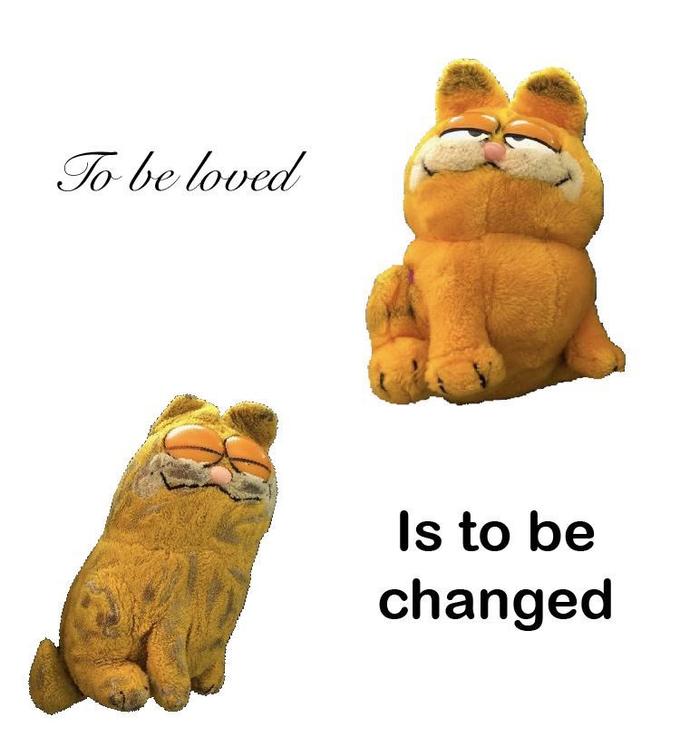“How do I wash my stuffed animal?”
“How do I wash my stuffed animal?” has been a recurring question on r/Plushies for years. This is an updating reference guide based on the Reddit Megathread of stuffed animal experts. So whether you’re cleaning your plushies for a New Year’s Resolution, or just trying to keep your collection pristine, here are some guidelines to follow.
“How to Wash my Stuffed Animal”: Introduction
“How To Wash my Stuffed Animal”: Introduction

“To be loved is to be changed,”
@tacticalcoqette
Proclaimed @tacticalcoqette on Twitter, commenting on the wonderful comparison between a well-loved sheep stuffed animal and its fluffy new counterpart. And I think that that speaks to all of us stuffed animal collectors. A well-loved stuffed animal will naturally matte and dirty over the years, and the color of printed parts will eventually rub off. But for some of us, it’s only an indication of the adventures we’ve been on together with our fluffy friends.
…But despite the endearing change over the years, you may still want to clean your friend every so often. It might be a bit harder to love a stuffed animal that smells a bit off, or is getting a bit too dirty. Furthermore, a little squishy friend could collect all sorts of germs in their day to day life. Lets help them (and you) stay healthy.
“How do I wash my stuffed animal or plushie?” You might ask.
Reddit’s r/Plushies, a community of 48,000+ stuffed animal collectors from around the world, have some directions. Follow these stuffed animal washing tips once every several months to keep your stuffed animal friend nice and clean.
Warning! Before You Start…
Be absolutely sure that your stuffed animal is safe for machine washing before following this technique. Notable exceptions will include…
>DO NOT machine wash HEATED STUFFED ANIMALS.
Popular stuffed animal brands such as the weighted, heated, lavender scented warmies, will not survive the amount of water a washing machine will throw at it. Instead, the bead filling will clump together irreparably.
>Check Vintage/Handmade Stuffed Animal Dye.
If you have an old or handmade stuffed animal, you may want to test the detergent on the stuffed animal before placing them in the washing machine.
>Paper Tags…
Remember that paper tags, and other non-fabric accessories may be damaged in the wash.
Step by Step: How to Wash your Stuffed Animal
- Step 1: Bag Your Stuffed Animal (Mesh/Pillowcase)
- Step 2: Close Bag. Add standard detergent.
- Step 3: Wash on the Delicate Cycle, No Heat.
- Step 4: Dry on Delicates, No Heat.
OR - Step 4: Air Dry
Machine Washing Stuffed Animals
Machine Washing Stuffed Animals Step 1/4: PROTECT
1.1 Find yourself a Mesh Bag, or Pillowcase.
Zipped Pillowcases will work great here, as they will keep the stuffed animal secure for the duration of the wash. Similarly, mesh bags with drawstrings can work when tied properly. And last but not least, you can always use a hairband, or a simple knot around the bag holding your plushies.
I personally use my Mainstay’s Polyester Laundry Hamper’s Removable Liner, and if you happen to have a similar removable laundry bag, it seems to work the best for keeping our friends collection nice and clean.
1.2 Pad the bag. (optional)
If possible, you may want to pad them with some clothing in the bag, or place them in a load with other lightly dirty clothes.
Machine Washing Stuffed Animals Step 2/4: PREP
1.1 Tie them up for washing
Make sure that your stuffed animals will not fall out of the bag for the duration of the cycle. Some brands will survive the journey, but tumbling through a washer can tear at the seams over time, weaken bead eyes, or break off small decorations. Let’s try to reduce that risk.
2.2 Choice of Detergent
“What detergent is safe for stuffed animals?” or “What’s the best detergent for stuffed animals?”
Generally, most standard detergents work pretty well for stuffed animals. I’ve had success with things as simple as the Kirkland brand laundry detergent, or even Tide Pods. Anything you want to use should work for a vast majority of stuffed animals and plushies. However, feel free to use gentle detergents if you want to be extra careful.


Machine Washing Stuffed Animals Step 3/4: WASH
Run on Delicates, Cold
Lots of stuffed animals or plushies are weak to high temperature washes. In fact, you might be familiar with the 30 icon listed in this section. That indicates a maximum temperature of 30 degrees Celsius, or 87 degrees Fahrenheit. Any cycle near that temperature can damage your stuffed animal, so please make sure to run it on NO HEAT. Make sure to run it on delicates, too.

Machine Washing Stuffed Animals Step 4/4: DRY

Machine Dry at No Heat.
If you are using a machine to dry your stuffed animals, make sure to dry them on Air Fluff, or “NO HEAT.” This will keep their fur light and fluffy. Applying heat during this step could permanently matte the fur of your stuffed animal down even faster.
OR Air Dry
Air drying your stuffed animals is another great option. Larger bulkier stuffed animals may take a while to dry off, so make sure to give them plenty of sunlight or access to heat. This will avoid the mildew smell from an extended drying period.

Hand Washing Stuffed Animals
Hand Washing Stuffed Animals

Febreze and Disinfect
To Quickly Clean Your Stuffed Animal
Spray isopropyl alcohol/rubbing alcohol on stuffed animals, then wipe them down with a towel. This is especially helpful when purchasing stuffed animals second-hand, to ensure that they’re free from germs. Alternatively, you can spray Baby Febreze on your stuffed animals to quickly remove odors.
If you have any issues with stains, you can apply Oxiclean and Laundry detergent to spot clean any problematic areas.
Scrubbing with Basic Dish Soap
Surface Washing Dirt
Dish soap is a great method for removing surface dirt from plushies. Remember to thoroughly scrub your stuffed animal, as any high quality stuffed animal’s fur will return. This method is quick and easy, requiring just a little extra time for rinsing.
Procedure
•Use dish soap to gently scrub the plush, focusing on stained areas.
•Rinse thoroughly to remove any soap residue.
•Air dry or use a heated towel rack, avoiding the use of a dryer to protect the fur.
For those dealing with stubborn stains, we recommend using spot spray stain removers such as OxiClean, and powder stain removers. Use a slightly stronger solution than recommended due to the plush’s surface area.

Use a Slicker Brush
For Clumps of Fur
When it comes to maintaining your plushies’ fur, a slicker brush is your go-to tool for removing clumps and keeping the plush looking fresh. Follow these steps to master the art of slicker brush grooming:
Choose the Right Brush
•Opt for a brush with fine, short wires for shorter fur, and longer wires for plushies with dense or longer fur.
Start Gently
•Begin by securing your plush on a stable surface, ensuring it won’t topple during the grooming process.
•For better results, use the slicker brush on dry fur. If the plush is slightly damp, make sure it’s not overly wet.
Apply Light Pressure
•Use a slicker brush with moderate pressure, avoiding excessive force.
•When encountering a stubborn clump, work through it by using short, gentle, and controlled strokes.
•If particularly bad, consider using your fingers to loosen parts of the fur around the affected area.
Deep Cleaning
Remove Stuffing
Gently break open a seam in the bottom of your stuffed animal. Use a seam ripper if possible, or deliberately cut the stitching in the desired area. Remove the stuffing when properly opened. If well loved, then this stuffing should be disposed of.
Wash Fur
Follow the above steps for washing your stuffed animal. Either use laundry detergent to hand wash the fur, or tape over the eyes and wash it in a washing machine on no heat. Use a slicker brush, and spot clean with Oxiclean where necessary.
Replace Stuffing
For replacement stuffing, you can purchase many types of polyfils. Our Breb Chinchillas use Silky Polyfil, however, and those of us with sensory-issues might like to use a similar super soft down stuffing. It helps make your friend even more loveable at the end! Then sew the open seam back together using a Ladder Stitch (AKA the Henson Stitch) in order to properly hide the fixed stitching on your stuffed animal.




